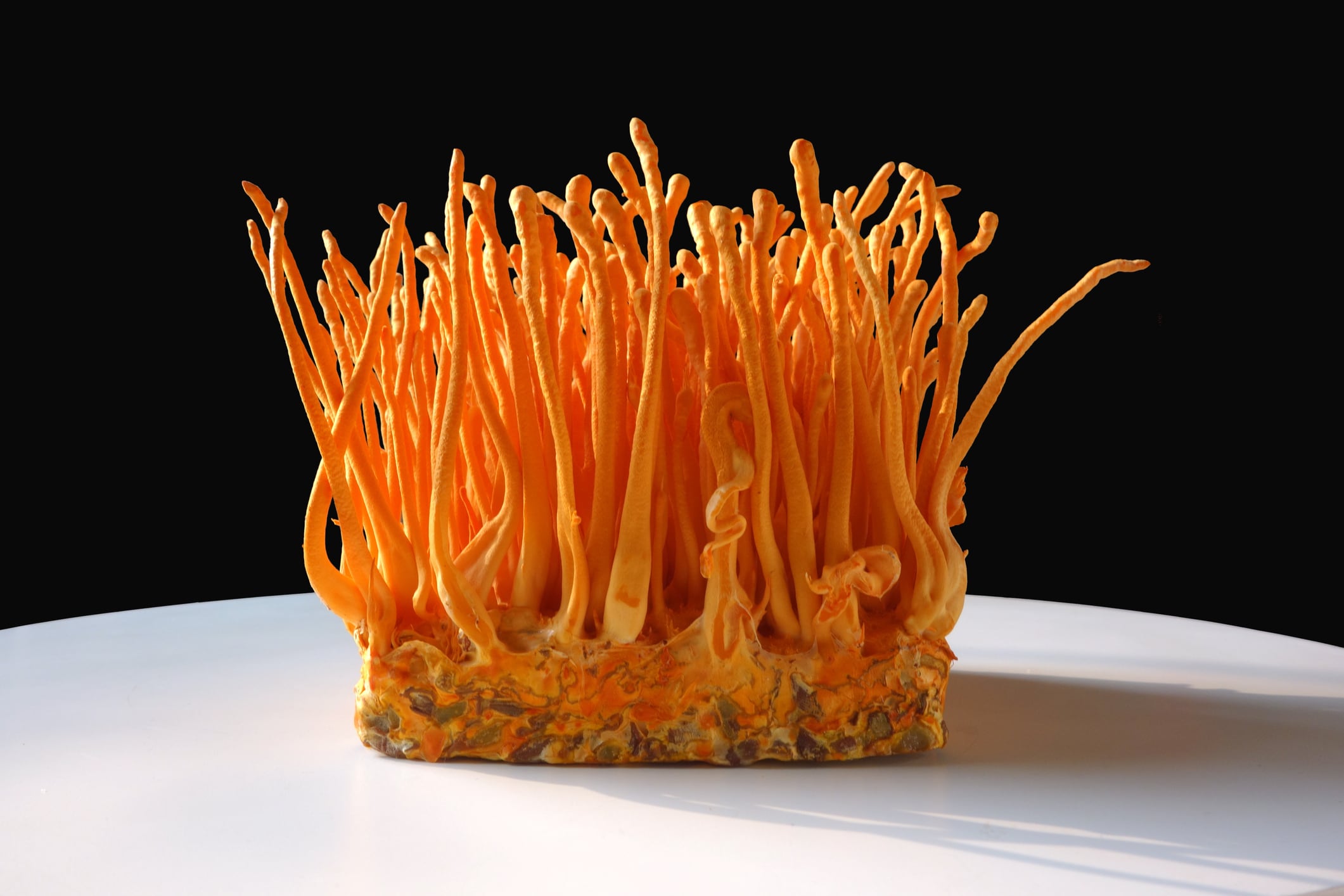The status is similar to Cordyceps sinensis, also known as ‘caterpillar fungus’, which was confirmed as not novel earlier this year. However, the mycelium and fruiting body of another species, known as Cordyceps militaris, remains novel according to the Novel Food catalogue.
While the ruling is positive and ‘long overdue’, it could cause confusion in the industry, according to Robin Gurney, director of the Estonia-based mushroom extract supplier Musheez.
This is because S. hepiali is commonly known and sold as cordyceps but actually belongs to a different genus.
Cordyceps vs S. hepiali
Predominantly found in the Qinghai-Tibet Plateau region of China, cordyceps traditionally refers to Ophiocordyceps sinensis. Known as the ‘winter worm’ or ‘summer grass’, this fungus species is very rare and may even be considered endangered.
The species has been used for hundreds of years in Chinese medicine, with research showing the fungus may support stamina, vitality and lung and kidney health.
However, given that wild O. sinensis is in scarce supply, it has become an extremely expensive commodity, sometimes costing thousands of euros per kilogram, according to Gurney.
For this reason, S. hepiali has effectively become a replacement for O. sinensis in dietary supplements across the globe.
“S. hepiali belongs to the same fungal family— Cordycipitaceae—but is a different genus from O. sinensis,” Gurney said.
“The well-known Cs-4 strain was originally thought to be O. sinensis, but genetic studies confirmed it is in fact S. hepiali. This is why many products in the West labelled ‘Cordyceps sinensis Cs-4’ are technically S. hepiali Cs-4.”
The advantage of S. hepiali is that it can be cultivated at scale by liquid fermentation, providing a safe, reliable and sustainable supply, he added.
It also delivers the same key compounds as wild cordyceps —such as cordycepin, adenosine, polysaccharides, mannitol and sterols—which underpin its anti-fatigue, immune-supportive and metabolic benefits.
“The beauty of S. hepiali is that it delivers the same key compounds as wild cordyceps, but it can be produced safely and sustainably,” Guerney said.
Could labeling requirements change?
So, is S. hepiali just as safe and effective as wild cordyceps? Gurney seems to think so, noting that confusion simply stems from labeling inaccuracies.
“[S. hepiali] is a well-studied ingredient, used safely in hundreds of products across the world and even sold as prescription medicine in China,” he said. “For decades, Cs-4 has largely been sold as ‘Cordyceps sinensis Cs-4.’ Scientifically that’s inaccurate, but commercially it has stuck.”
Gurney believes the recent update on S. hepiali’s status as a non-novel food is unlikely to cause any changes to labeling requirements. However, it may cause more accurate labeling to emerge.
“At Musheez, we are considering amending bulk labeling and product sheets in the light of this ruling," he said. “We will leave our private label clients to decide what is appropriate for their case.”
In terms of impact, Gurney says the decision will create regulatory certainty for the EU supplement industry, which is likely to impact the availability and popularity of cordyceps-type supplements.
“The EU ruling puts S. hepiali on the same footing as O. sinensis—both can now be used in food supplements, giving brands certainty and consumers more choice,” he said. “The decision will probably mean higher and wider availability of ‘cordyceps-type’ supplements. Once this information is fully digested, I expect we will see a cordyceps boom.”


